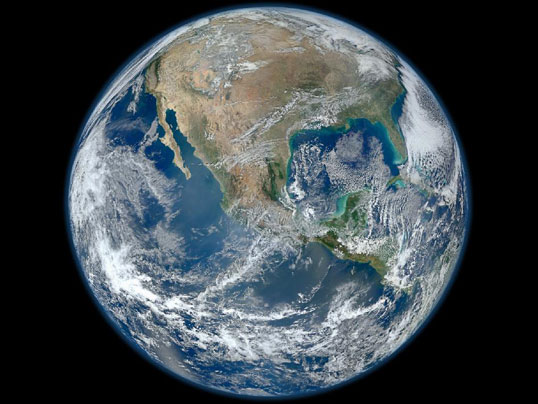News | September 27, 2013
New U.N. report: Humans responsible for climate change

A 'Blue Marble' image of the Earth taken from the VIIRS instrument aboard NASA's most recently launched Earth-observing satellite - Suomi NPP.
A United Nations panel has released the first part of its much-anticipated six-year update on the state of climate change. The report by the Intergovernmental Panel on Climate Change (IPCC) says there is 95 percent certainty that humans have caused most of the warming of the planet's surface that has occurred since the 1950s — up from 90 percent certainty in the last assessment report, which came out in 2007.
The report draws from many independent scientific analyses of climate change, which use direct observations of Earth’s climate, paleoclimate archives, theoretical studies of climate processes and simulations using climate models.
Other key findings include:
- Today carbon dioxide is at an "unprecedented" level not seen for at least the last 800,000 years.
- Sea level is set to continue to rise at a faster rate than over the past 40 years. Waters are expected to rise by between 26 cm (10 inches) at the low end and 82 cm (30 inches) at the high end.
- There is "high confidence" that over the last two decades the Greenland and Antarctic ice sheets have been melting, glaciers have receded in most parts of the world, and Arctic sea ice has continued to shrink in terms of extent.
- Many of the changes seen in our climate since the 1950s are "unprecedented over decades to millennia."
The IPCC issued its "Summary for Policymakers" as part of the "Physical Science Basis of Climate Change" section of the report in Stockholm on Friday, and will release the full text of that section on Monday, Sept. 30, on the IPCC website (http://www.ipcc.ch/). Additional sections will be released in the coming months, providing a comprehensive summary of the current state of scientific knowledge on climate change.
More than 25 NASA scientists helped author and review the Fifth Assessment Report. The report is the work of a total of 209 lead authors and 50 review editors from 39 countries, and over 600 contributing authors from 32 countries.





